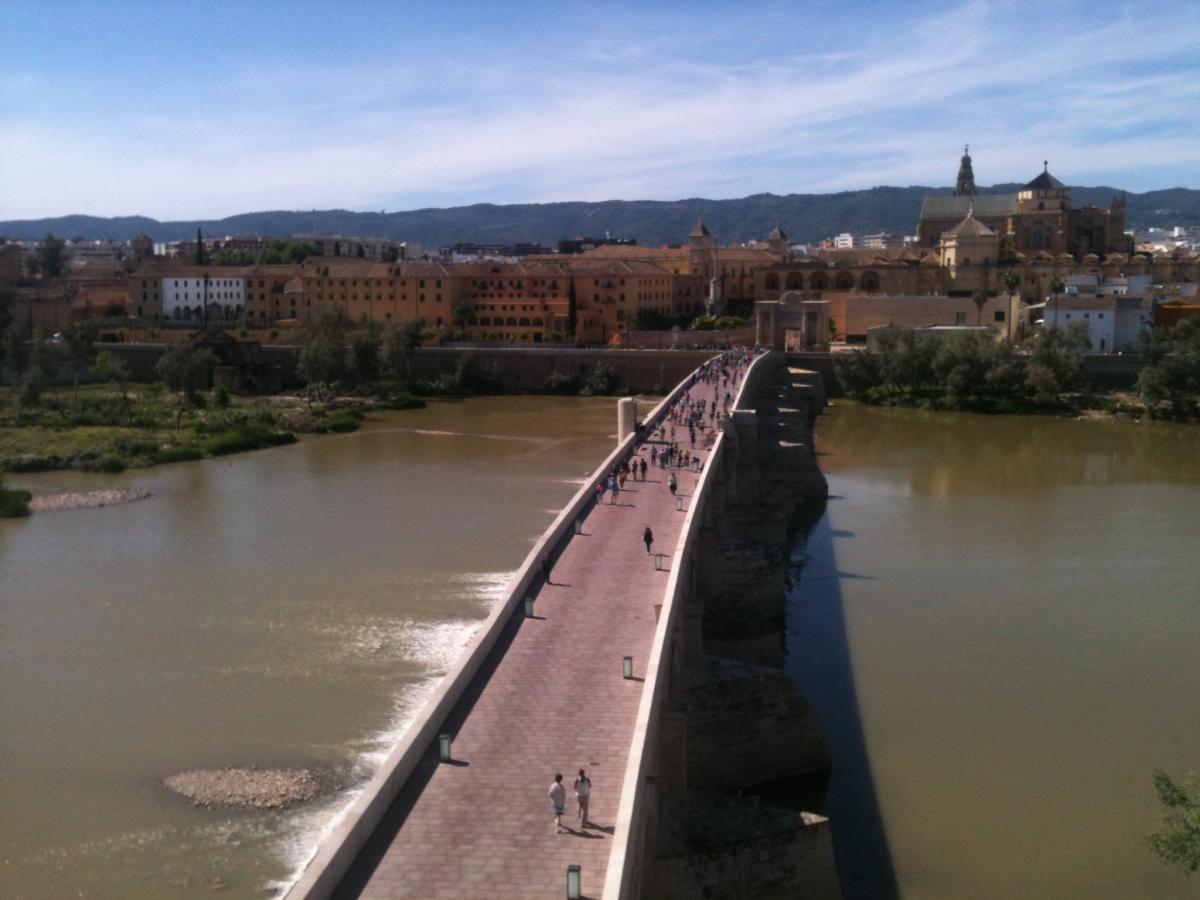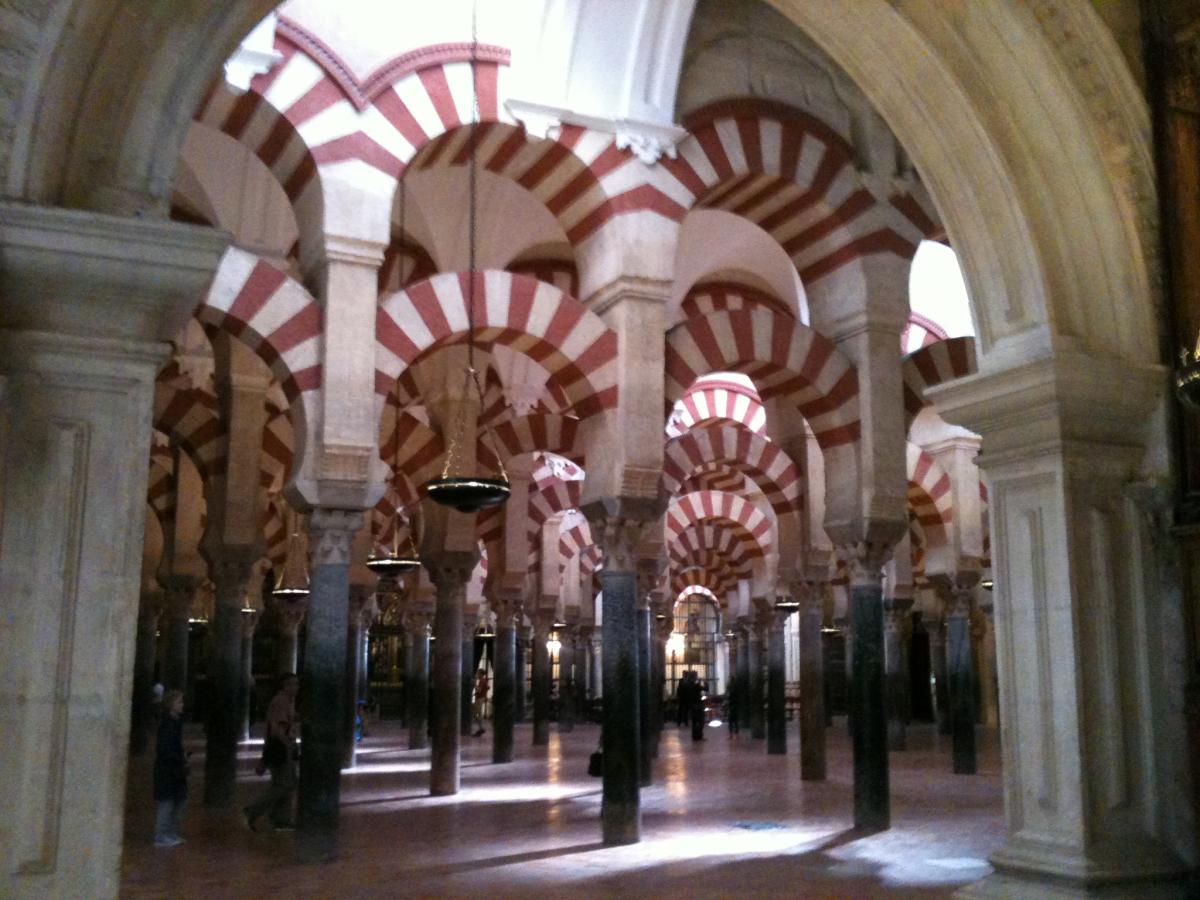 Cordoba City Visit
Cordoba City Visit
Cordoba - Capital of Moorish El-Andalus
As the boys headed off on a 3-day bike trip from Cordoba to Granada (more of that when they finish), I took the chance to visit the city of Cordoba. The city was of strategic importance back in Roman times but it's heyday was when it flourished under arabic rule to become the capital of the Moorish kingdom El-Andalus. Later, having been reconquered by the Christians in 1236, the city created a model society where Christians, Jews and Muslims could live and study freely and harmoniously together. It was a period of peace and great intellectual growth and development......until the Inquisition decided to put a stop to that sort of thing.
With only a day to spend, it meant a fairly whistle-stop tour but the great thing is that Cordoba is pretty compact and the most important sights are all very close together. Yes, there can be a lot of crowds all milling about the key venues but, certainly at this time of year, there is still space enough for everyone and there were no queues at anything I visited.
If you are driving to Cordoba, I'd recommend staying away from the narrow streets in the old town - I saw a few tourists in new hire cars looking very worried as they faced ever narrowing roads! So don't follow the signs which tell you to turn left to the city centre, over the Puente San Rafael, continue on down the Avenue de Cadiz and you can park for free on the side of the road and then take a 2 minute walk to the Puente Romano, the pedestrian Roman bridge, for the best viewpoint from which to enter the city.

The two must-see sights in Cordoba are the Mezquita, the unique mosque-cathedral, and the Alcazar (of the Christian Kings), which are located just over the Puente Romano. As numerous tour guides give full and better descriptions of both these buildings than I could ever do, I will simply say that I thought the Mezquita was hugely impressive and the Alcazar gardens absolutely stunning.

The Mezquita is the result of turning an already stunning Mosque into a Christian cathedral when the city was re-conquered in 1236. The Mosque was constructed around 850 marble pillars and coloured arches, decorated with ornate mosaics, arched ceilings and lots of delicate goldwork. As the mosque had been built on the site of an old church, the conquerors wanted to reclaim the space whilst not destroying the magnificent building which had taken its place. So they "simply" added the traditional renaissance christian elements of nave, transept, saints' chapels etc inside. But that description does no justice at all to the sheer scale of the thing - the nave, altar, chapels and choirstalls were HUGE!!! I can't say I actually liked the later additions, as the Mosque was calm and peaceul and was originally open to the main courtyard, so would have been flooded with light; instead of this, the cathedral elements struck me as rather too ostentacious and loud. But that's just me.
The Alcazar building is a traditional but relatively small, Moorish palace, complete with rooftop battlements, Arab baths and open, water-filled patios. It's a much smaller version of the Alhambra in Granada so an easy tour round. I loved the gardens at the Alhambra but here in Cordoba I had the advantage of visiting them when the spring flowers were at their most colourful (I was in Granada in November). I also loved the additional charming aspect of statues of the Christian Kings dotted about between the poplars, as though in deep discussion.
After all this history and culture, it was time for a spot of lunch. I'd always recommend steering away from eating places right on top of the main sights, the Mezquita and the Alcazar, so I wandered to the Jewish quarter, just north of the Alcazar, and found a myriad selection of small bars and cafes, where I found that plancha-ed (griddled) squid accompanied by a glass of fino were a fitting choice of sustenance.
For the rest of the day, I wandered the Jewish quarter, exploring its many tiny streets and courtyards, popping along to the Callejon de las Flores, a tiny street which just manages to squeeze in the perfect profile of the Mezquita's bell tower. Unfortunately the Synagogue was shut, though it is supposed to be worth a visit, so the alternative of the Jewish Casa de Sefarad was reasonably interesting but not a must-see.
I finished with a visit to the museum at the Tower of the Calahorra, at the opposite end of the Roman bridge to the Mezquita. It is supposed to be a "modern, audio-visual experience" but when the headphones don't work vey well and some of the voiced mannequin speeches go on a bit long, it doesn't thrill all the way. But the giant model of the Mezquita, as it was before the Catherdral elements were added, and some of the the dioramas of historic city life were good. The views from the top of the tower across the bridge to the city are also stunning.
I'm sure there is other stuff that I missed but, even with just one day, it's a lovely city to visit - I'd definitely recommend it.
Heather Cooper, Hike + Bike the Sierras 30/05/2014

